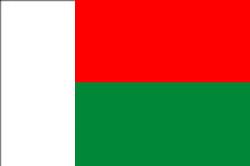
Published date
21 December 1975
Madagascar came under the colonial French Protectorate in 1890. By the late 1940's, the Malagasy had started to demand independence. A national uprising took place in 1947, but was crushed by the French government. Approximately 80,000 Malagasy deaths were reported during the year that this uprising took place. The French government was left with little choice but to move towards granting Madagascar independence. In 1958, eleven years after the uprising, the Malagasy Republic was proclaimed and full independence was granted in 1960 under President Philibert Tsiranana. The first constitution was adopted in 1959. Unlike many other former French colonies, Madagascar resisted communist movements. Tsiranana became increasingly unpopular because of this and was forced to step down. In 1975 Lieutenant-Commander Didier Ratsiraka seized power from the provisional president and established a socialist government, nationalizing the economy and cutting all ties with France. Under the Ratsiraka administration, a new constitution was adopted in Madagascar on 21 December 1975. Due to the dire effect that Ratsiraka's policies had on the Madagascan economy, moves towards a market economy were made from the 1980s. Ratsiraka tried to maintain a one party state but local and international power forced him to allow the adoption of a new and democratic constitution in 1992. This same constitution is currently upheld in Madagascar.
References
BBC News, (2013), Country Profile: Madagascar, from BBC News, 03 October, [online], Available at: news.bbc.co.uk [Accessed 27 November 2013]|History World, (2000), History of Madagascar, [online] Available at: historyworld.net [Accessed 27 November 2013]|History Orb, Today in Madagascar History, [online] Available at: historyorb.com [Accessed 14 November 2013]